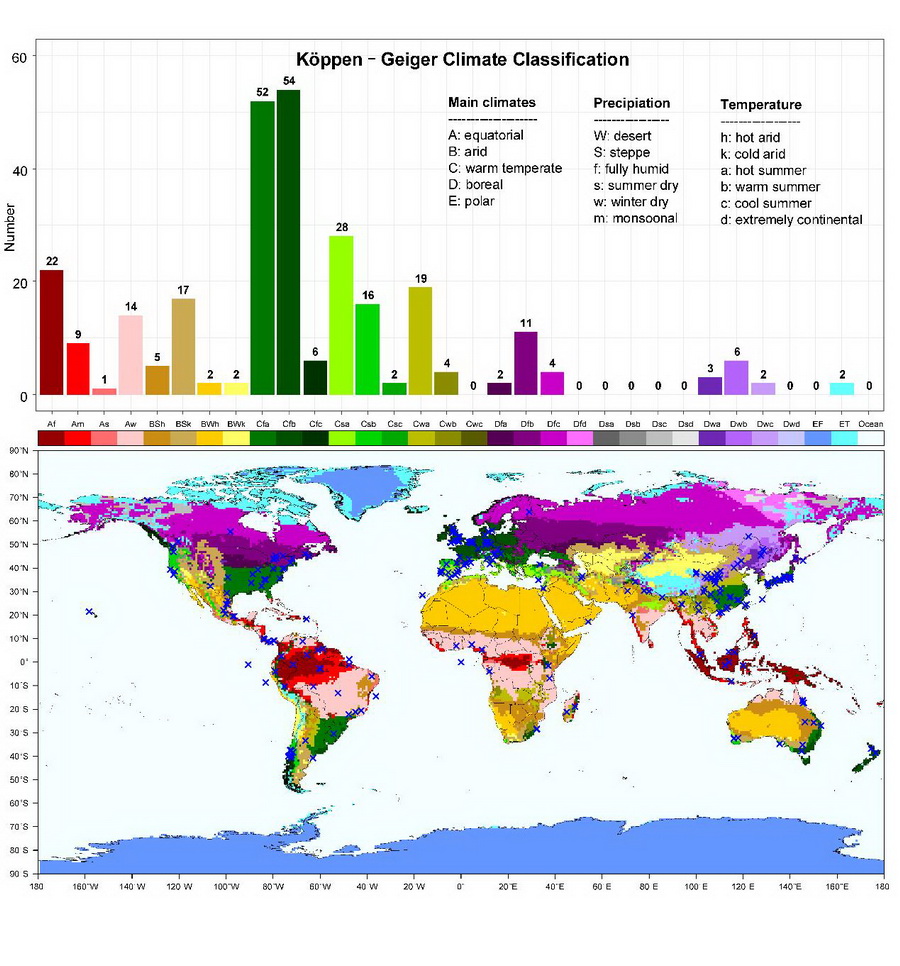Scientists Reveal Effects of Biotic and Abiotic Factors on Stemflow Production in Woody Ecosystems
Updatetime:2021-06-28From:
【Enlarge】【Reduce】
Stemflow refers to a part of precipitation that is intercepted by leaves, twigs, and branches and eventually channeled into soil through trunk or stem, which further could be transported and redistributed into deeper soil layers through preferential pathways such as roots.
Numerous field observations indicate that stemflow, as a highly localized point input of rainwater and solutes around tree/shrub bases, plays a wide array of roles in ecosystem functioning, likely generating hot spots and moments of water and nutrients fluxes.
To date, none has systematically and quantitatively evaluated how global cross-site biotic and abiotic factors affect the patterns of stemflow production. This greatly hinders the progress toward quantitatively integrating stemflow into macroscale-to-global hydrologic, climate, and terrestrial ecosystem models.
In a study published in Global Ecology and Biogeography, researchers from Northwest Institute of Eco-Environment and Resources (NIEER) of Chinese Academy of Sciences (CAS), together with their colleague from Lanzhou University, compiled a global dataset of 488 stemflow observations within terrestrial woody plants (trees and shrubs) ecosystems extracted from 234 papers published between 1970 and 2019.
They found that stemflow in arid zones was significantly higher than in other climate types, and shrubs had a significantly higher stemflow than trees. Moreover, they observed that nonlinear responses of stemflow into major regional or global hydrological, climate and vegetation models.
The research result indicated that vegetation height, mean annual precipitation, mean annual temperature, stand density, stand age and bark type substantially accounted for the stemflow production in woody ecosystems. Besides, leaf area index, diameter at breast height, basal area, phenology type, life-form and leaf type were classified as low importance.
A global synthesis of stemflow production in terrestrial woody ecosystems as provided in this study would aid in an unbiased estimation in water and nutrient budgets of vegetated ecosystems, and is expected to be an important step toward integrating stemflow into major regional or global hydrologic, climate, and vegetation models.
This research was financially supported by the National Key Research and Development Program of China, the Youth Innovation Promotion Association of the Chinese Academy of Sciences, the National Natural Science Foundation of China and the Fundamental Research Funds for the Central Universities.

Figure 1 Global distribution of study sites (blue cross) in the synthesis on the map of the K?ppen–Geiger climate classification. (image from ZHANG Yafeng)

Figure 2 Relative influence (a) and partial dependence plots (b) of individual biotic and abiotic variables on stemflow percentage. (Image from ZHANG Yafeng)
Contact:
ZHANG Yafeng
E-mail: zhangyafeng@lzb.ac.cn
Shapotou Desert Research and Experiment Station, Northwest Institute of Eco-Environment and Resources, Chinese Academy of Sciences, Lanzhou 730000, China
Appendix




